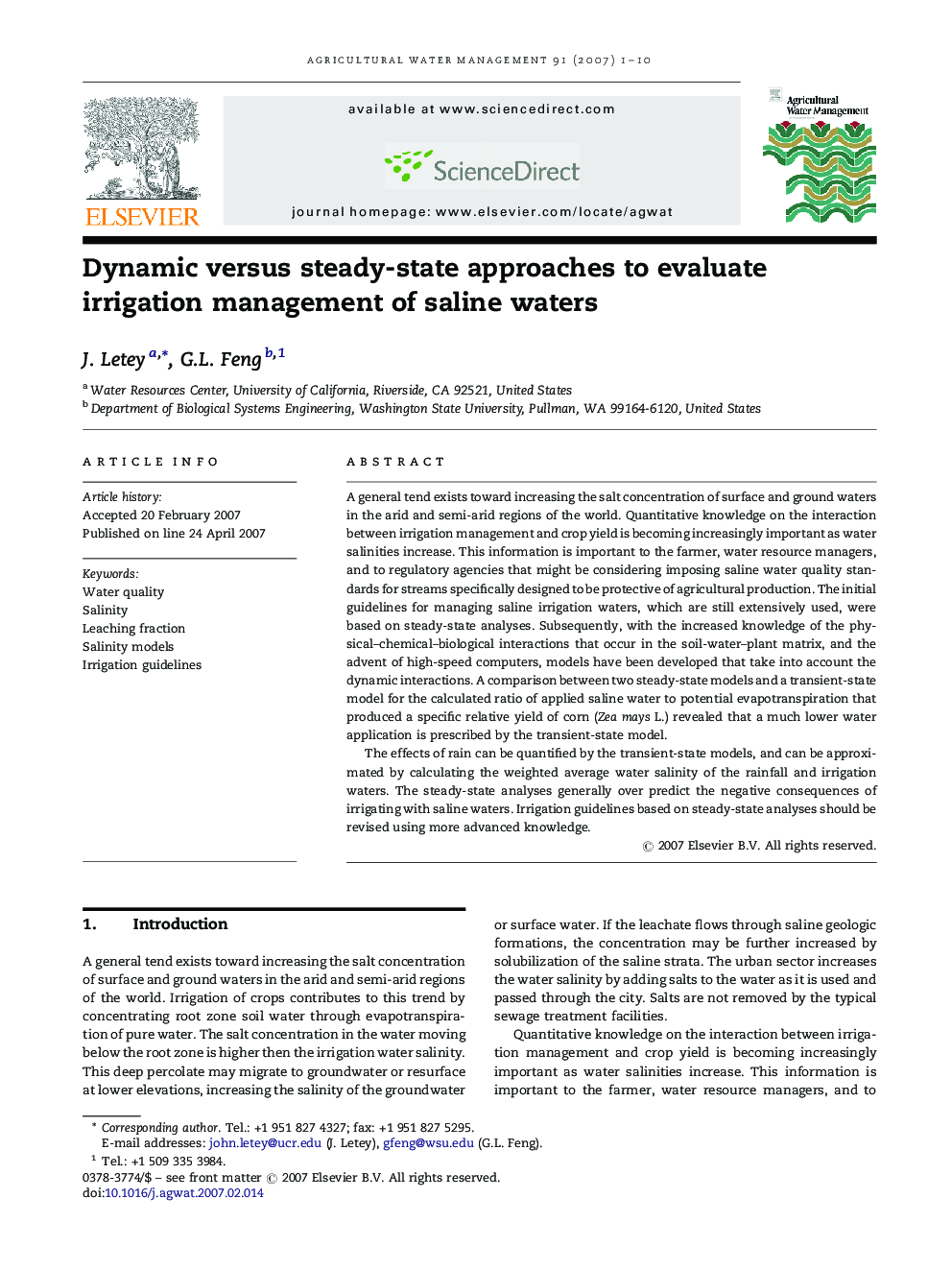| Article ID | Journal | Published Year | Pages | File Type |
|---|---|---|---|---|
| 4480326 | Agricultural Water Management | 2007 | 10 Pages |
A general tend exists toward increasing the salt concentration of surface and ground waters in the arid and semi-arid regions of the world. Quantitative knowledge on the interaction between irrigation management and crop yield is becoming increasingly important as water salinities increase. This information is important to the farmer, water resource managers, and to regulatory agencies that might be considering imposing saline water quality standards for streams specifically designed to be protective of agricultural production. The initial guidelines for managing saline irrigation waters, which are still extensively used, were based on steady-state analyses. Subsequently, with the increased knowledge of the physical–chemical–biological interactions that occur in the soil-water–plant matrix, and the advent of high-speed computers, models have been developed that take into account the dynamic interactions. A comparison between two steady-state models and a transient-state model for the calculated ratio of applied saline water to potential evapotranspiration that produced a specific relative yield of corn (Zea mays L.) revealed that a much lower water application is prescribed by the transient-state model.The effects of rain can be quantified by the transient-state models, and can be approximated by calculating the weighted average water salinity of the rainfall and irrigation waters. The steady-state analyses generally over predict the negative consequences of irrigating with saline waters. Irrigation guidelines based on steady-state analyses should be revised using more advanced knowledge.
